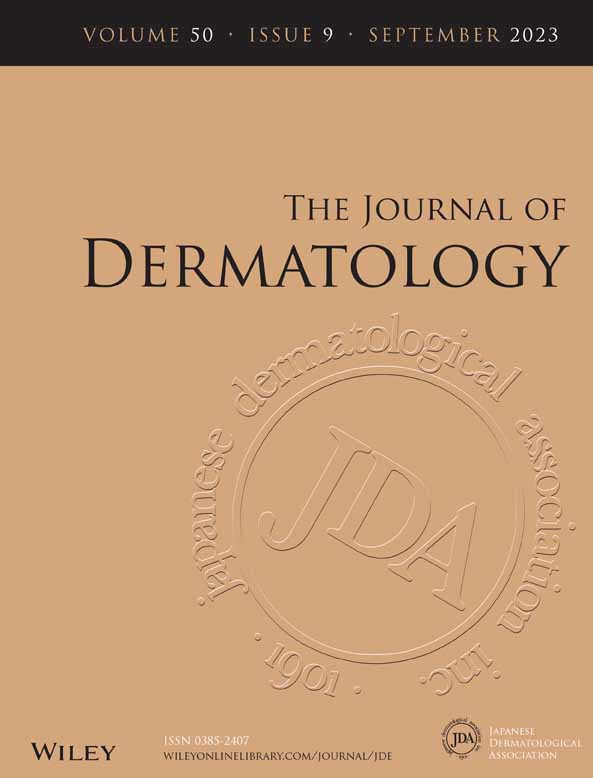A Japanese patient with hereditary angioedema caused by deep intron variation in the SERPING1 gene
Tokimasa Hida
Department of Dermatology, Sapporo Medical University School of Medicine, Sapporo, Japan
Search for more papers by this authorAki Ishikawa
Department of Medical Genetics, Sapporo Medical University School of Medicine, Sapporo, Japan
Search for more papers by this authorMasae Okura
Department of Dermatology, Sapporo Medical University School of Medicine, Sapporo, Japan
Search for more papers by this authorMari Kishibe
Department of Dermatology, Asahikawa Medical University, Asahikawa, Japan
Search for more papers by this authorCorresponding Author
Hisashi Uhara
Department of Dermatology, Sapporo Medical University School of Medicine, Sapporo, Japan
Correspondence
Hisashi Uhara, Department of Dermatology, Sapporo Medical University School of Medicine, South 1 West 16, Chuo-ku, Sapporo 060-8543, Japan.
Email: [email protected]
Search for more papers by this authorTokimasa Hida
Department of Dermatology, Sapporo Medical University School of Medicine, Sapporo, Japan
Search for more papers by this authorAki Ishikawa
Department of Medical Genetics, Sapporo Medical University School of Medicine, Sapporo, Japan
Search for more papers by this authorMasae Okura
Department of Dermatology, Sapporo Medical University School of Medicine, Sapporo, Japan
Search for more papers by this authorMari Kishibe
Department of Dermatology, Asahikawa Medical University, Asahikawa, Japan
Search for more papers by this authorCorresponding Author
Hisashi Uhara
Department of Dermatology, Sapporo Medical University School of Medicine, Sapporo, Japan
Correspondence
Hisashi Uhara, Department of Dermatology, Sapporo Medical University School of Medicine, South 1 West 16, Chuo-ku, Sapporo 060-8543, Japan.
Email: [email protected]
Search for more papers by this author
REFERENCES
- 1Maurer M, Magerl M, Betschel S, Aberer W, Ansotegui IJ, Aygören-Pürsün E, et al. The international WAO/EAACI guideline for the management of hereditary angioedema – the 2021 revision and update. Allergy. 2022; 77: 1961–90.
- 2Iwamoto K, Morioke S, Yanase Y, Uchida K, Hide M. Tissue factor expression on the surface of monocytes from a patient with hereditary angioedema. J Dermatol. 2014; 41: 929–32.
- 3Vatsiou S, Zamanakou M, Loules G, Psarros F, Parsopoulou F, Csuka D, et al. A novel deep intronic SERPING1 variant as a cause of hereditary angioedema due to C1-inhibitor deficiency. Allergol Int. 2020; 69: 443–9.
- 4Drouet C, López-Lera A, Ghannam A, López-Trascasa M, Cichon S, Ponard D, et al. SERPING1 variants and C1-INH biological function: a close relationship with C1-INH-HAE. Front Allergy. 2022; 3:835503.
- 5Hujová P, Souček P, Grodecká L, Grombiříková H, Ravčuková B, Kuklínek P, et al. Deep intronic mutation in SERPING1 caused hereditary angioedema through pseudoexon activation. J Clin Immunol. 2020; 40: 435–46.




